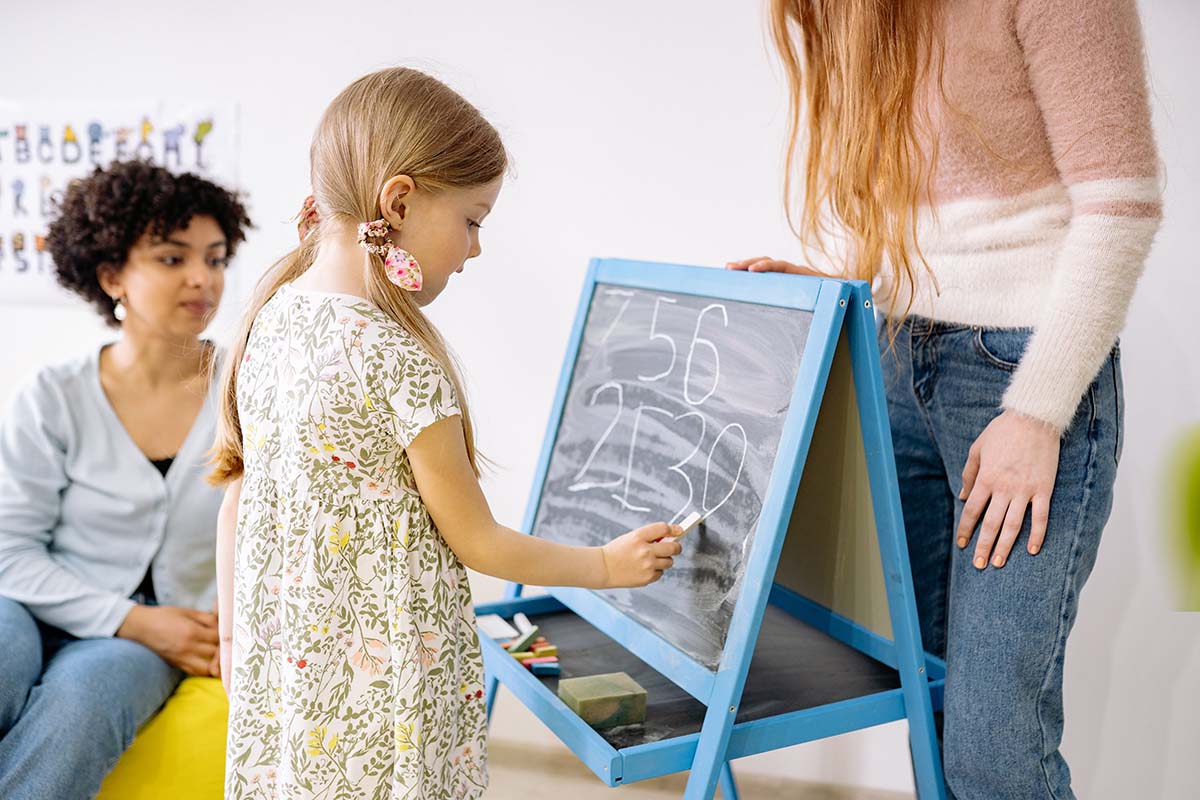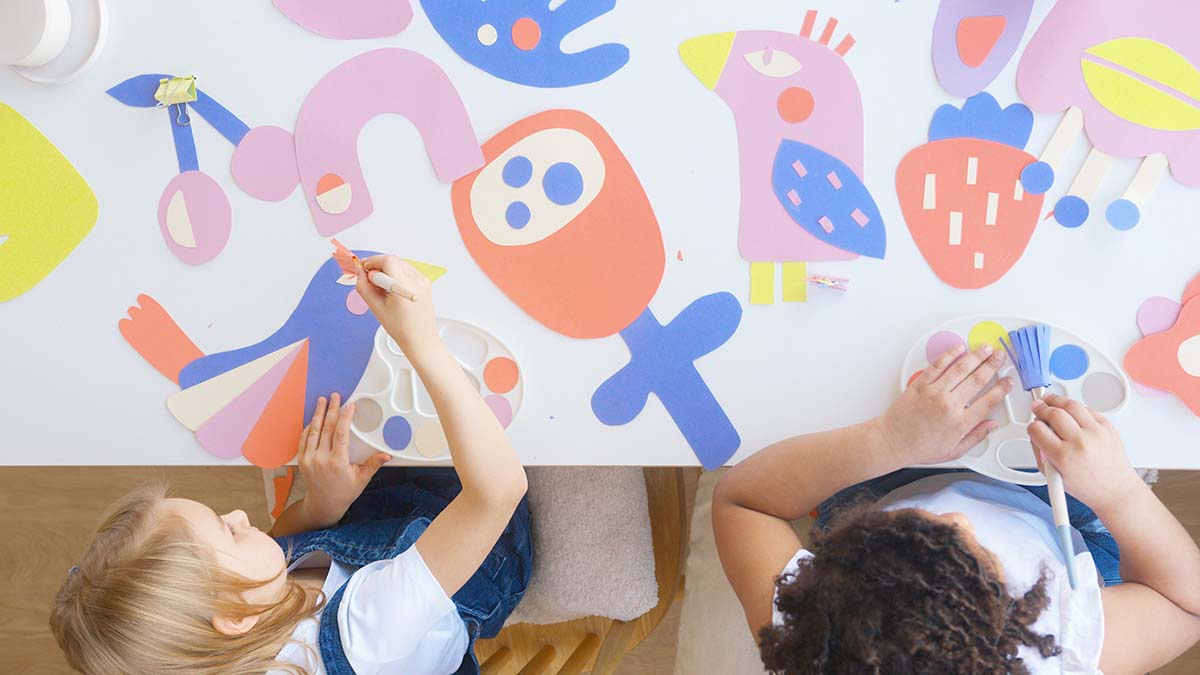
Math might be all about numbers, but that doesn’t mean that there isn’t vocabulary you need to learn. Every new skill you learn has a whole new set of words and rules you need to know to succeed at your best. Math is no different. Spark Math by Spark education wants you to be prepared for new terms and phrases that come up with new math concepts each grade. Our new series “Math vocabulary you need to know!” is a great way to be prepared for new expressions students may hear while learning new math concepts. Here is the Kindergarten Math Vocabulary you need to know to succeed!
1. Counting on and Counting Back
Kindergarten math revolves heavily around the concept of counting. When they get familiar with the very basics of numbers, they start their introduction to addition and subtraction. Some of the first strategies they will learn will be “counting on” and “counting back”
What does counting on mean?
When learning simple arithmetic on a number line, the phrases “Counting on” and “Counting back” are used be used. Counting on is when you start at a number and move forward, or right, on a number line to achieve and answer. If students have questions like, “John had 6 apples and was given 2 more. How many apples does John have now?” We would start at 6 on a number line, and “Count on” 2 spaces. Moving forward 2 spaces on a number line would have us reach our answer, 8.
What does counting back mean?
Counting back is the same concept, only moving in the opposite direction on the number line. If you were asked to count back from a number you would start on a certain number and move left, or backward, on a number line line.
Why is this important in kindergarten?
These terms help kindergarten kids have an understanding of counting forward and backward to begin understanding the concepts of simple arithmetic. Addition and subtraction are some of the earliest math skills kids learn and will be relevant throughout their education. These terms help build the foundation of their math adventure by helping them understand the concepts of adding and subtracting through counting.
2. Greater than or Less Than / Larger than or Smaller than
Learning to describe the world around you in ways everyone can understand is one of the most important parts of math. Later in a student’s education, they will be able to describe size in more specific ways. For now, Kindergarteners must understand how to compare sizes in a general way and the words that give them the power to do that.
What is Greater than and less than?
The phrases “greater than and less than” are important for understanding amounts when it comes to numbers. The number 10 is greater than the number 7. This concept is important to understand for the basic of addition and subtraction. In basic arithmetic, when using addition you will always get a number greater than the original numbers you added together. In subtraction you will wind up with a number less than the larger number that’s subtracted from.
What is Larger than or Smaller than?
“Larger than and smaller than” are concepts that can be used for numbers but also help describe size in real objects. Being able to compare shapes by size helps kids start the process how the world around them fits together. With the understanding of how the sizes and amounts of objects and numbers compare, children can start the journey toward understanding not only numbers but also geometry, measurement, and even early engineering skills.

3. 2 Dimensional and 3 Dimensional Shapes (2D &3D Shapes)
One of the first concepts children learn, supported by toys and activities, is shapes and basic geometry. Starting from building blocks to putting objects in the right-sized container, shapes are a huge part of the way young children learn through play. Once they enter kindergarten they start learning the basics about the most common shapes. The main things kindergarten kids learn is the differences between flat shapes and the shapes of objects in the real world. Students will learn the terms 2-dimensional (2D) and 3-dimensional (3D) shapes to establish the categories
What are 2D Shapes?
2 Dimensional shapes can only be measured 2 ways. They are measures by how wide they are and how long (or tall) they are. The easiest way for kids to tell if an object is 2D, is if it’s flat. Some of the most used 2D objects in kindergarten math are the triangle, rectangle, square and circle. The shapes are fun to draw and using them kids can start learning how shapes can work together.
What are 3D Shapes?
When kids are using objects at home or in the class room, they are usually 3D. 3 Dimensional objects can be measure 3 ways. Just like 2D objects they are measures by how wide and long (or tall) they are. The third dimension is called depth, thats how deep and object is. The easiest way to tell if an object is 3D, is if when you hold it it feels full. When you turn a 3D shape you can see it has different sides, it isn’t flat. A lot of kids favorite toys like building blocks are 3D. Some of the 3D shapes kindergarten kids learn are cubes, cones, and spheres.
With these simple shapes, kids begin their journey through geometry. This might seem like basic knowledge, but without it kids won’t be able to move on toward learning angles, measurement and even physics. 2D and 3D objects really do help shape the future of math for kindergarteners.
Spark Math helps kids become math masters!
Spark Math by Spark Education is the perfect way to help kids get a better understanding of math skills and vocabulary to become math aces. Our online supplemental math program is a fun and effective way for kids to learn math. Our experienced real-time teachers change boring math lessons into exciting math adventures with gamified learning and captivating animations. With interactive pod-sized classes of 6 or fewer, kids get the attention and support they need to understand even the hardest concepts. Try it for yourself by signing up for a free trial today!





